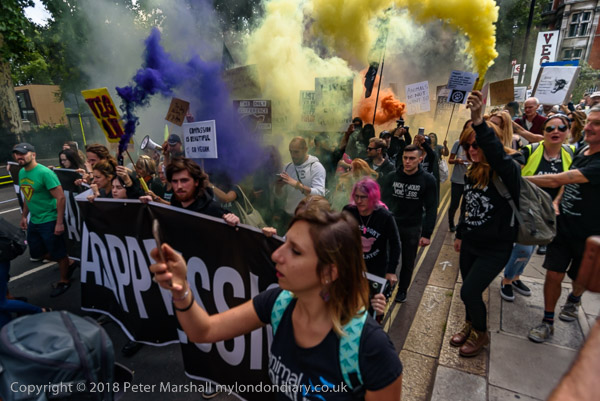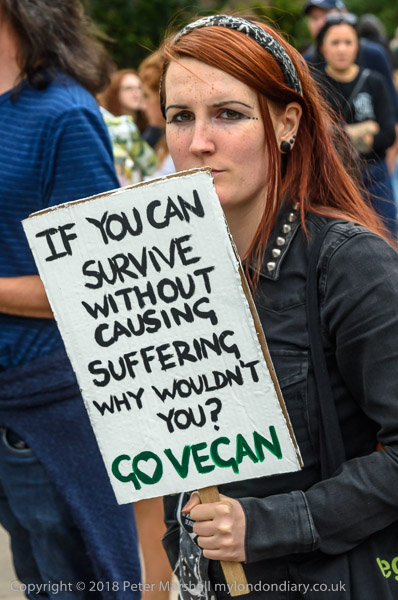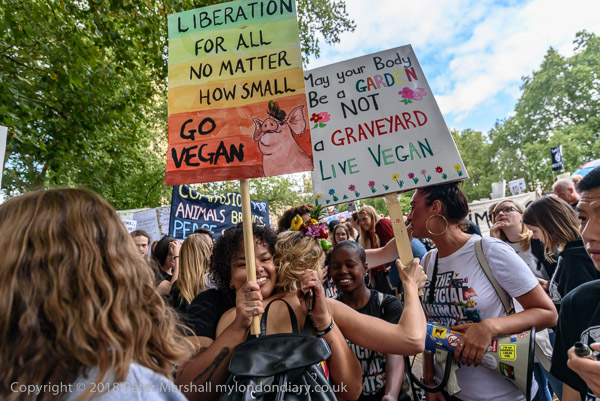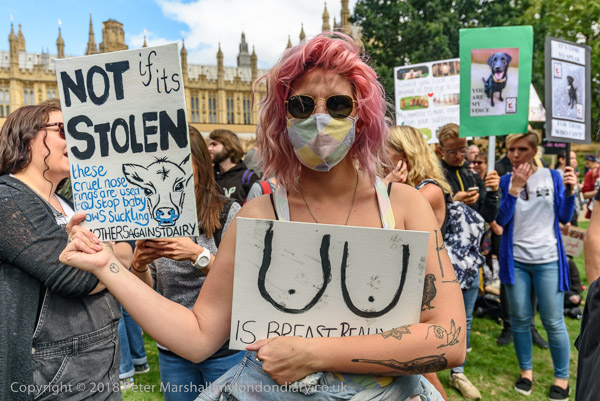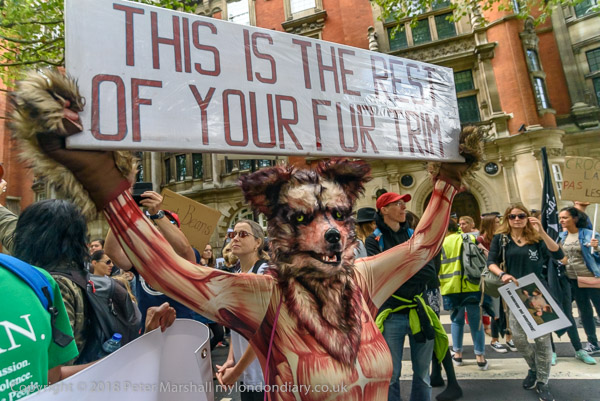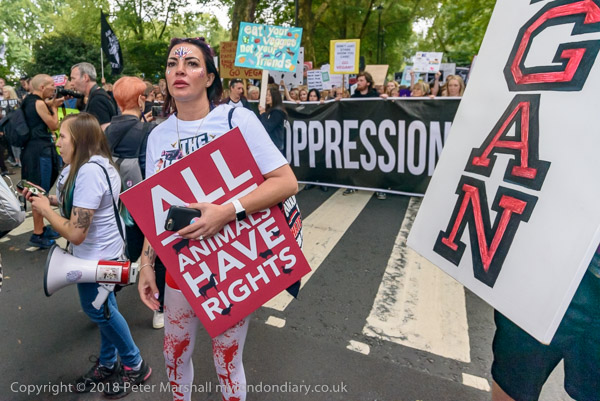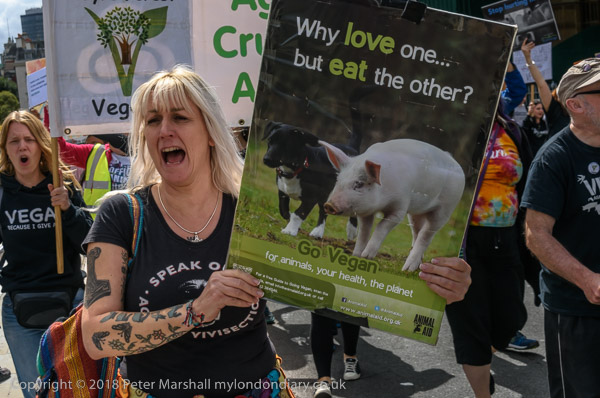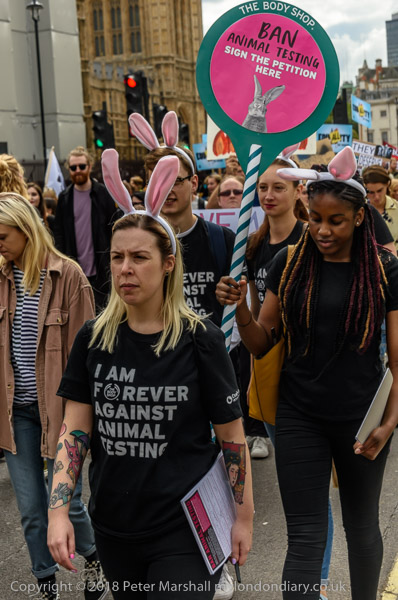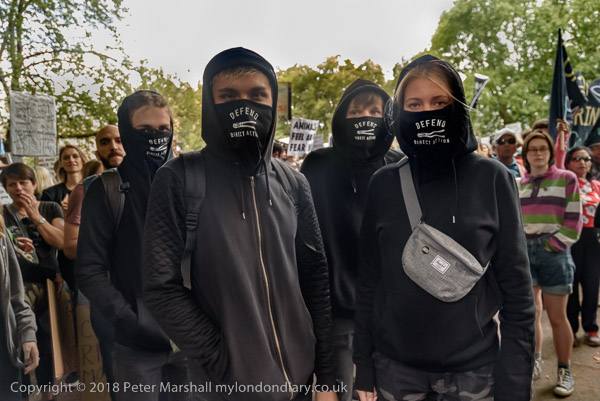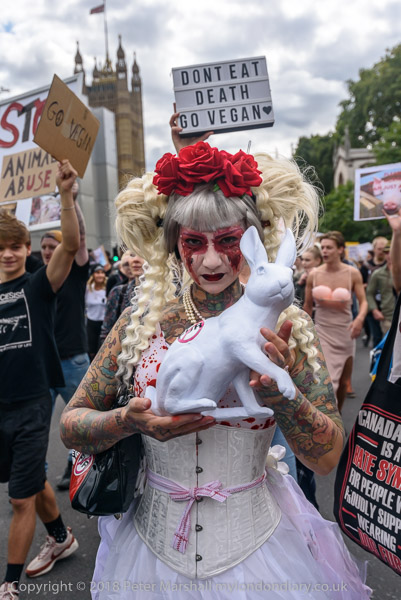Hong Kong, Fur, Brixton & Carnaby – There were five events listed in my diary for Saturday 23rd November 2019, but I only photographed two of them, the Stand With Hong Kong march and rally and the annual March Against Fur, though I missed the others. But I did take a couple of short walks. I can’t remember now why I went to Brixton, but my trip to Carnaby Street was to see a small exhibition in a shop I had three pictures in.
Stand With Hong Kong – Westminster
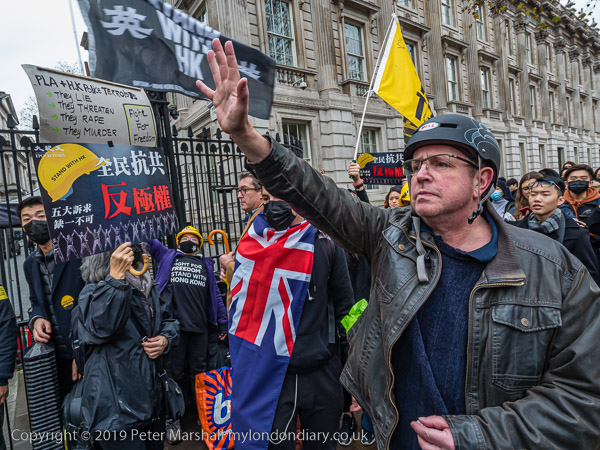
Sadly the idea that the British Government could in 2019 have any real influence on China over the breaches of Sino-British Joint Declaration agreed in 1984 when Margaret Thatcher was in power was always an illusion.
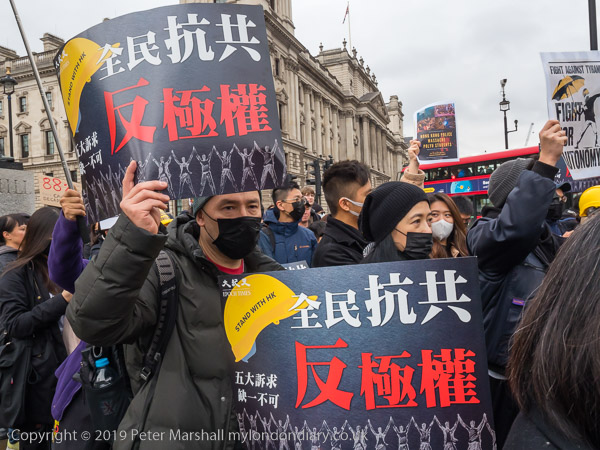
In 2014 the Chinese government had said it regarded the agreement had already met its objectives following the handover in 1997 and they regarded it as now having no legal effect. The British government disagree but have no possibility of doing anything to change Chinese minds or actions.
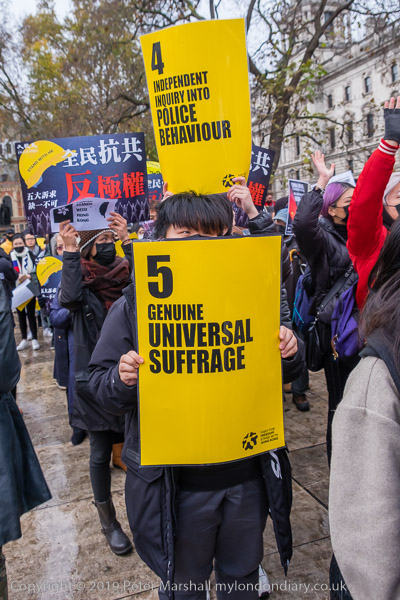
So while I had great sympathy with people of Hong Kong who had been protesting there as well as their supporters in foreign countries including UK, it was clear that these protests would not change policies in Hong Kong.
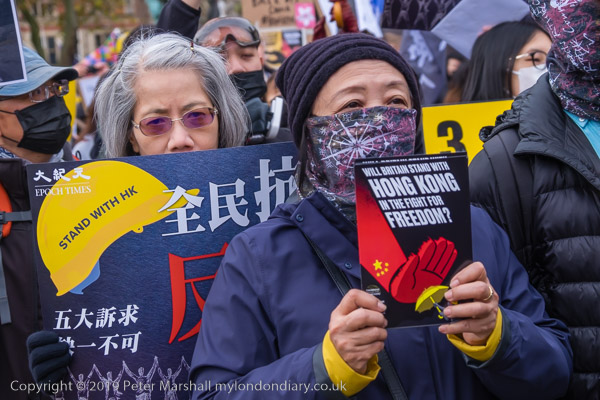
Finally the British government had to admit this and it led to the setting up of the Hong Kong British National (Overseas) visa scheme in 2021, which allowed Hong Kong British National (Overseas) citizens (BNOs) and their close family members to move the the UK for five years after which they can apply for leave to remain and, after a further year for British citizenship.
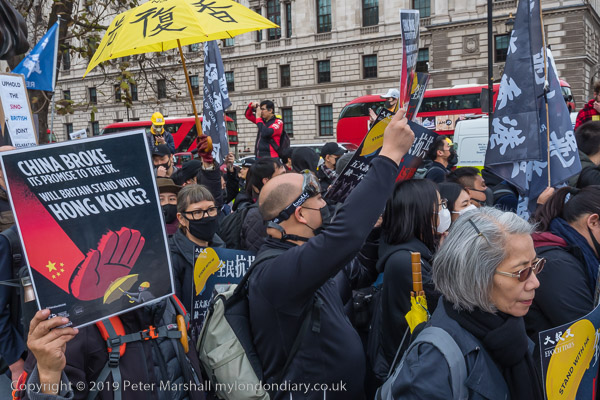
Perhaps protests such as these did influence the government in how the scheme was set up, with a fairly generous interpretation of the rules governing family members, although the route to becoming a British citizen seems unnecessarily long and complicated.
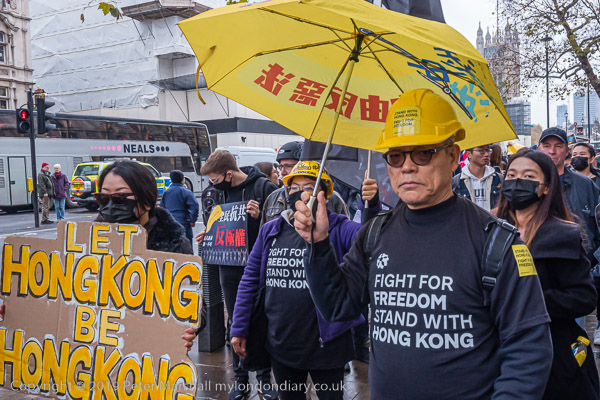
BNO status was set up by an Act of Parliament following the 1984 declaration for Hong Kong residents who wished to retain a connection with the UK after the handover to China and had to be claimed before that too place in 1997. About a third of Hong Kong residents had BNO status and the scheme would also allow a similar number of their families to get visas.
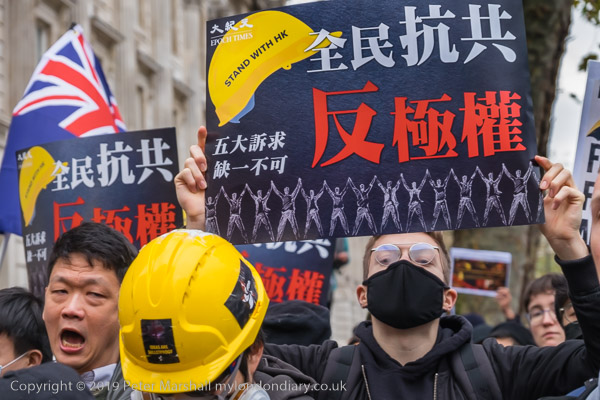
Although the total number of people eligible to come to the UK was thought to be over 5 million, the number expected to take up the offer was expected to be around 320,000 and so far is only roughly half this. Although much cheaper than other visa schemes it remains quite expensive as a health charge is also applied and for a family with one child the total costs over the period to obtain British citizenship is around £20,000.
March Against Fur 2019
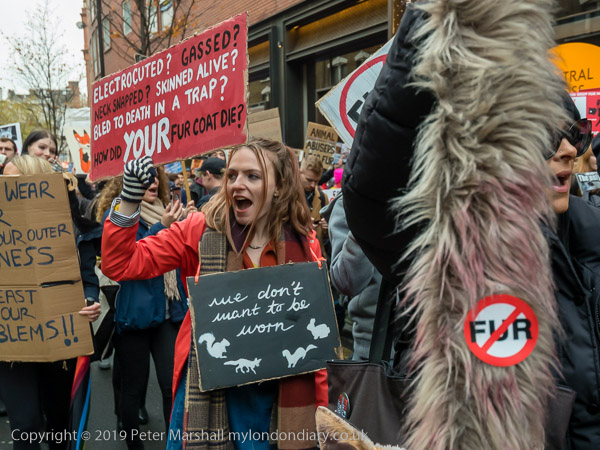
After a rally in Leicester Square the march set off through central London.
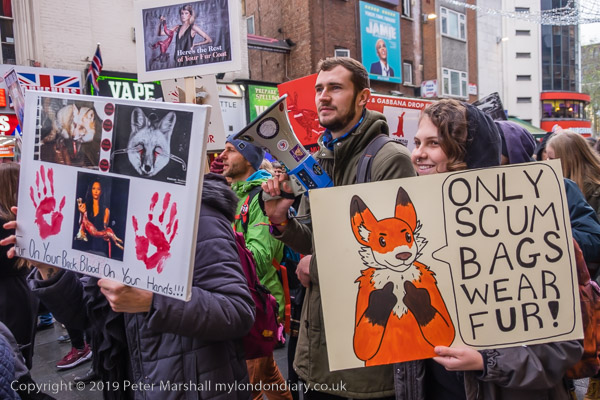
The march went along the pavement along Charing Cross Road, which was extremely crowded.
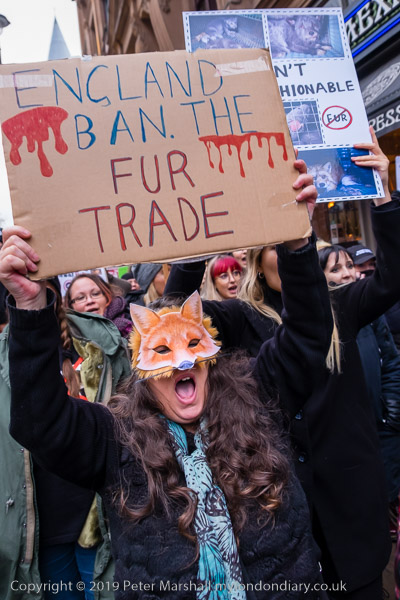
Though it spilled out onto the road.
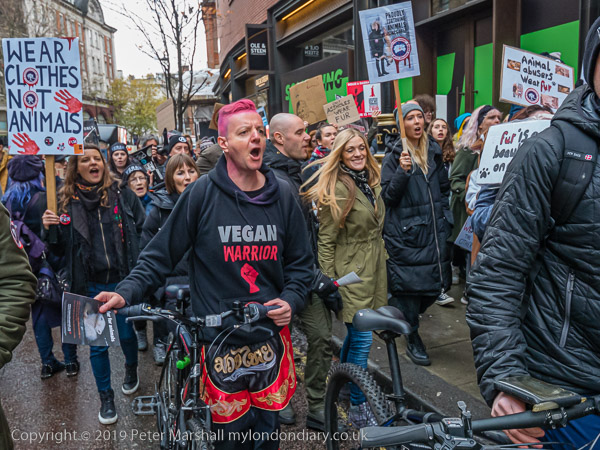
Although the main focus of the many posters was against fur and the ending of the fur trade, the main banner called for an end to all forms of animal oppression and many on the march were vegans.
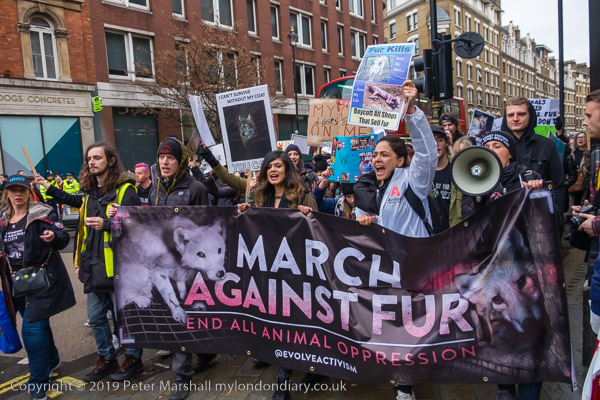
I left the march as it turned down Shaftesbury Avenue for a tour of the West End and stores selling fur products, calling for an end not just to using fur in clothing but against all exploitation of animals of all species, whether for meat, dairy, wool, leather or other products.
More pictures at March Against Fur 2019
Brixton & Carnaby Street
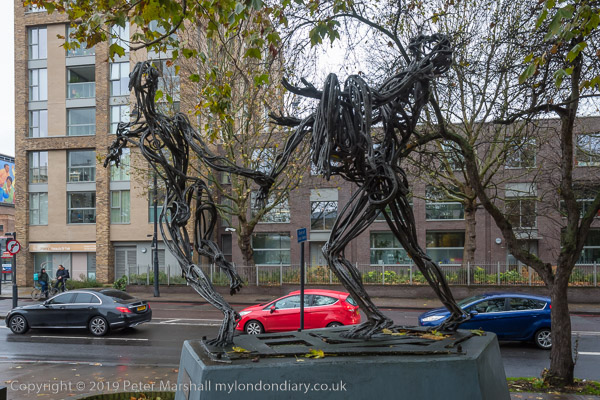
First Child by Raymond Watson, a memorial to 116 children murdered by the Afrikaner police force in Soweto in 1976 was the first public sculpture by a Black artist in the UK, commissioned in 1998 by the 198 Gallery.
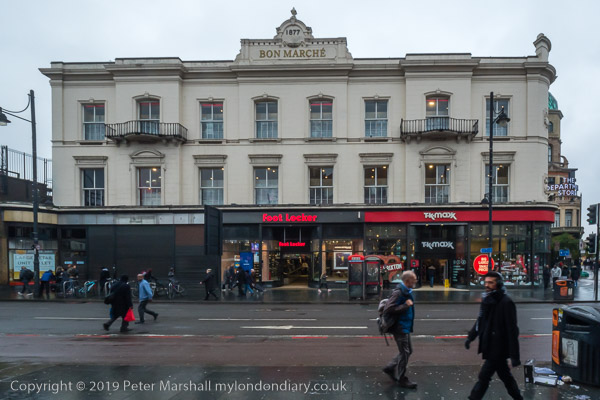
Bon Marché, Britains first purpose built department store, was opened in 1877. Its founder went bankrupt but the store continued in business with various owners until 1975. Since then it has been refurbished with almost all ground floor detail lost.
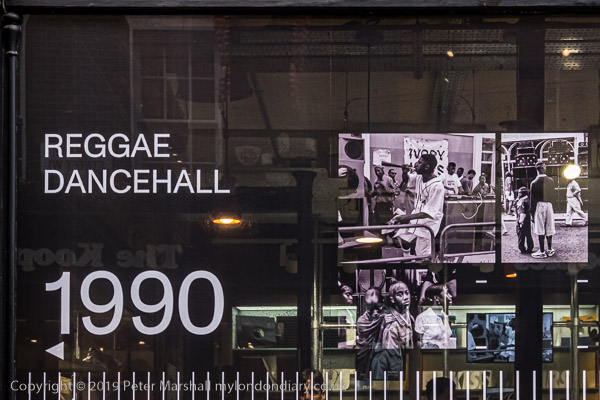
I paid a brief visit to Carnaby Street where 3 of my pictures were in the window of a shop called Size? in a temporary display celebrating the apparently iconic Nike Air Max 90 introduced in 1990. I took the three rather maroon images in this picture of the window and the one at the right, taken at Notting Hill Carnival in 1990 shows a man in rather long shorts wearing those trainers. There were ten panels in the display, the other nine using later pictures taken by other photographers.
